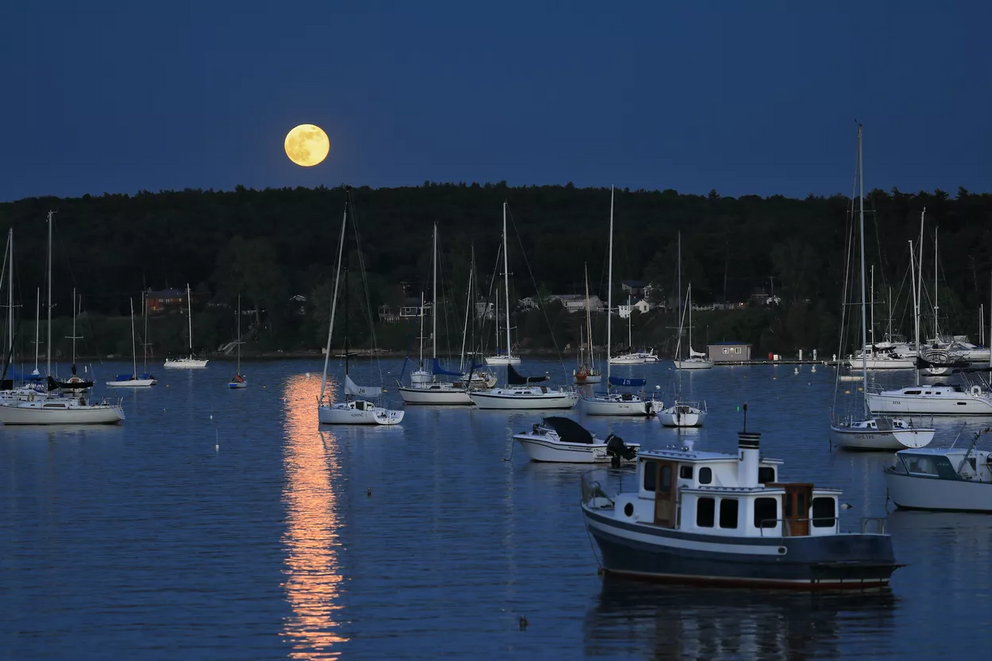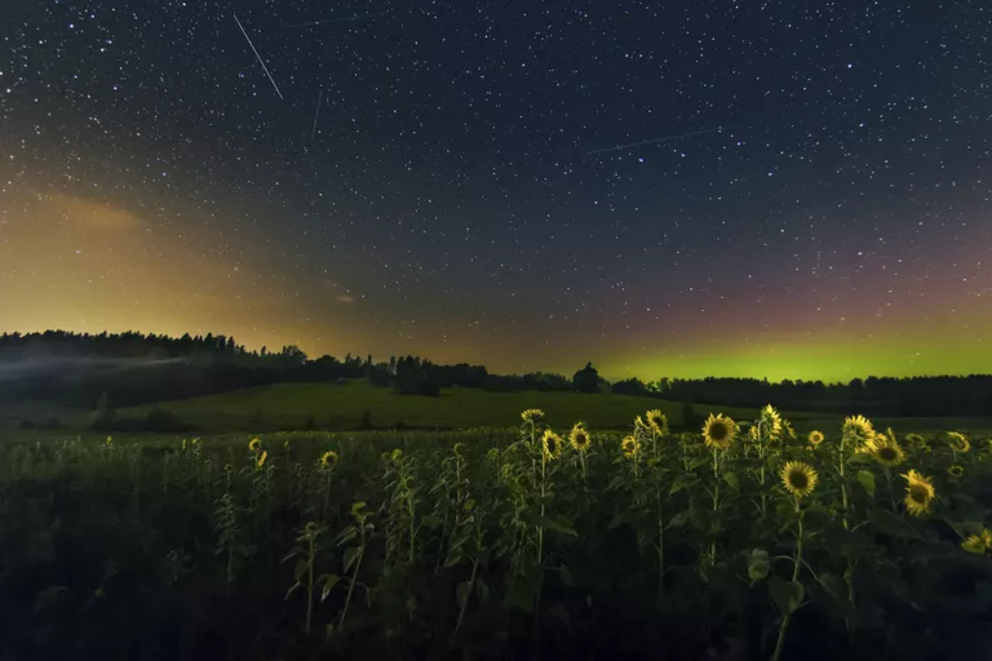What to see in the night sky in September 2021
A field of sunflowers at night, with northern lights in the background (Finland).
From a Harvest Moon to welcoming fall, this month is all about change.
Dust off that sweatshirt, grab a blanket, and enjoy the waning weeks of summer while you're looking up into the evening sky. Below are just some of the beautiful celestial highlights to look forward to in September 2021.
Jupiter and Saturn Continue to Dominate (all month)
Despite being at their closest (opposition) to the Earth last month, Jupiter and Saturn remain bright fixtures in the southern sky. As the pair rise about four minutes earlier each evening, they’re easy to spot just after sunset. Jupiter, nearly 15 times brighter than Saturn, and four of its largest moons (the planet hosts 79 in total) can be seen using only a pair of binoculars. To spot Saturn’s colorful rings, it’s recommended by Celestron that you use a telescope "with an aperture of at least 50mm and modest power (25x)."
The New Moon Gives Way to Dark Skies (Sept. 6)
Night sky viewing will reach peak conditions around Sept 6, when the Moon’s orbit around the Earth will take it between the Earth and Sun. Called a "New Moon," the lunar surface appears dark because the side that’s illuminated by the Sun is facing away from Earth. This monthly occurrence results in dark skies, perfect for viewing celestial wonders such as galaxies, faint meteors, or the galactic core of the summer Milky Way.
Neptune at Its Closest (And Brightest) to Earth (Sept. 14)
Neptune, the eighth and farthest known planet in our solar system (sorry, Pluto!), will reach its annual opposition—when the Earth passes between it and the Sun—on September 14. Despite having a mass 17 times that of Earth, this gas giant is so far away (it takes light four hours to travel between Neptune and Earth) that it appears very dim even at opposition. To view it, Earth-Sky recommends consulting this chart from TheSkyLive and investing in a tripod-mounted pair of binoculars or a telescope. Fun fact: Neptune’s winds can reach speeds up to 1,500 mph—the fastest yet detected in our solar system. It’s also our coldest planet, dipping down to temperatures of -366.6°F (-221°C). Have your stargazing guests ponder that while you attempt to locate this blue-tinged wonder.
 Moonrise in New England.
Moonrise in New England.
Catch the Harvest Moon (Sept. 20)
September’s full Moon, nicknamed the “Harvest Moon”, will rise on September 20 at 7:54 p.m. EDT. As the name implies, this full moon is so-called due to its timing (rising for several days just after sunset) in providing crucial light to farmers harvesting their crops. Unlike other full Moons, the naming of this one is tied specifically to the fall equinox. As such, the “Harvest Moon” can sometimes occur in early October (as it did in 2020). When that happens, September’s full moon is appropriately called the “Corn Moon.”
Wave Goodbye to Summer and Greet the Fall Equinox (Sept. 22)
The first day of autumn in the Northern Hemisphere will officially arrive on this day, and for our friends in the Southern Hemisphere, it's the first day of spring! At 3:21 p.m. EDT, we'll say goodbye to the lazy days of summer and welcome the start of fall with the autumnal equinox. According to Time and Date, this event marks "the moment the sun crosses the celestial equator—the imaginary line in the sky above the Earth’s equator—from north to south and vice versa in March." It's also a good time to start thinking about firewood, stocking up on pumpkins and warmer clothing, and anticipating the colder months that lie ahead. (According to the Farmers' Almanac, it’s going to be “one of the longest and coldest” that we’ve seen in years.)1
Welcome Back the Return of the Haunting Zodiacal Light (late Sept.)
This celestial object (aka the Zodiacal light) signals the start of fall for the Northern Hemisphere. It's described as a "cone-shaped glow," similar to the Milky Way's dusty look, but made out of comet and asteroid dust. It’s estimated that for this phenomenon to remain a steady presence in our skies, some 3 billion tons of matter must be injected into it each year by comets. For best viewing, look up your local sunrise time and subtract an hour—and make plenty of coffee to keep you awake as this "false dawn" appears.
For full references please use source link below.

